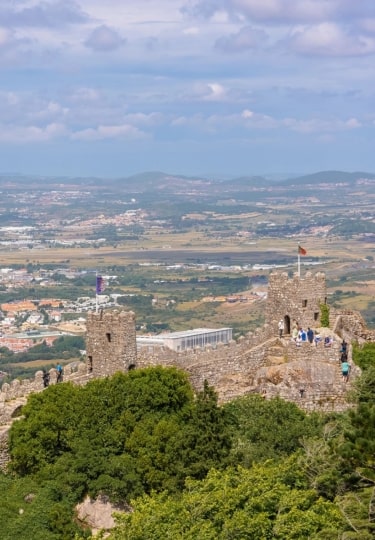Many of the best things to do in Sintra are palatial: touring opulent stately homes, relishing regal retreats, and photographing panoramas from atop historic ruined castles.
Yet the surrounding nature of this UNESCO-listed Cultural Landscape deserves the limelight, too. Atlantic waves tumble across honey-colored sands at the base of cliff-hugging, whitewashed villages. A web of trails wends through forests of oaks and pines towards mainland Europe’s most westerly point.
This bucolic blend of wilderness and extravagant residences led to Sintra being one of Europe’s first cradles of romantic architecture in the 19th century. Once an escape reserved for the elite, these elegant abodes are now open to all.
Whether you’re interested in visiting whimsical palaces, riding vintage trams, or contemplating wave-crashing vistas, these are the top things to do in Sintra.
Tour the Pena Palace and Park
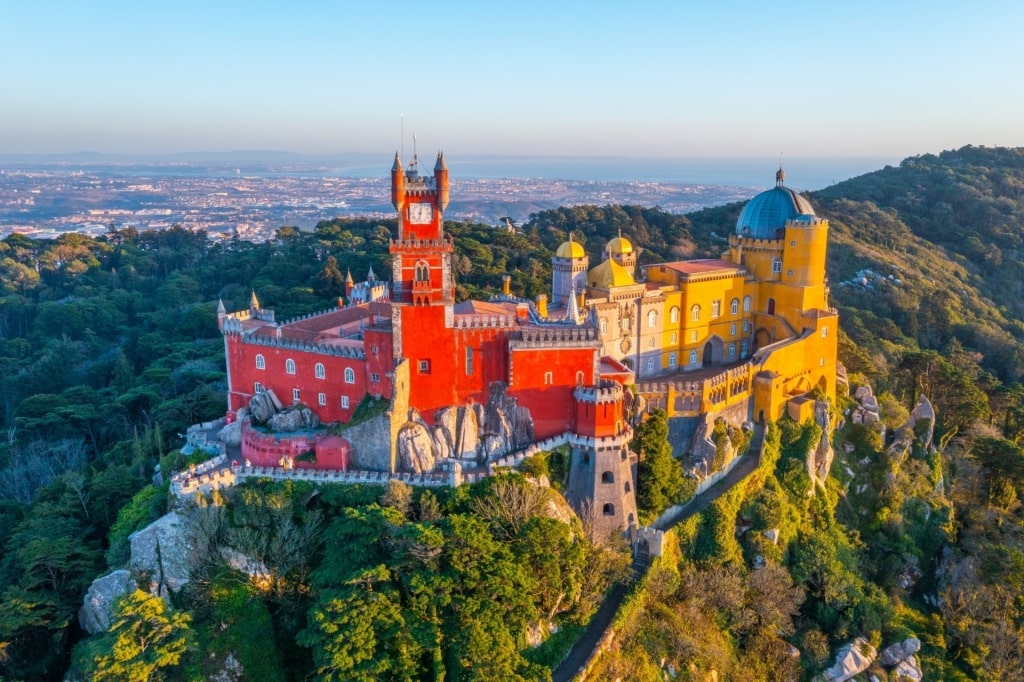
National Palace of Pena
The National Palace of Pena has become Sintra’s poster child. A flamboyant melange of turrets, domes, and crenelated defenses, this showstopper could be straight from the pages of a pop-up fairytale book.
With its mustard, vermillion, and azulejo- (Portuguese ceramic tiles) clad facade, it’s impossible to miss, especially as this is Sintra’s loftiest retreat, unless an ethereal mist hovers in the hills.
It’s an arduous amble to arrive if you travel on foot, and that’s exactly how the monks who lived here for centuries wanted it to be: private and secluded.
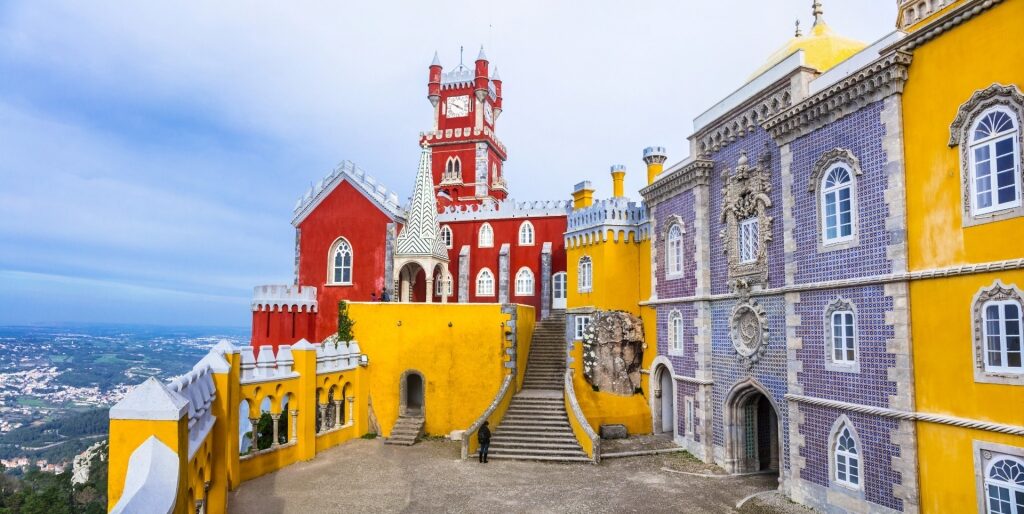
National Palace of Pena
By the mid-19th century, much of the monastery was in disrepair, and King Ferdinand II ordered the construction of this all-styles architectural feast. As monarch, his focus often appeared more on the arts than running a nation, which explains why Pena Palace is so audacious.
Inside, the over-the-top decor continues. Dizzying tilework in the Manueline Cloister—part of the 16th-century monastery—and the ornate Islamic-style ceiling in the King’s Bedroom are sensational. By contrast, the palace’s park provides a far more sedate setting.
Relax in Pena Park & See the Panorama From the High Cross
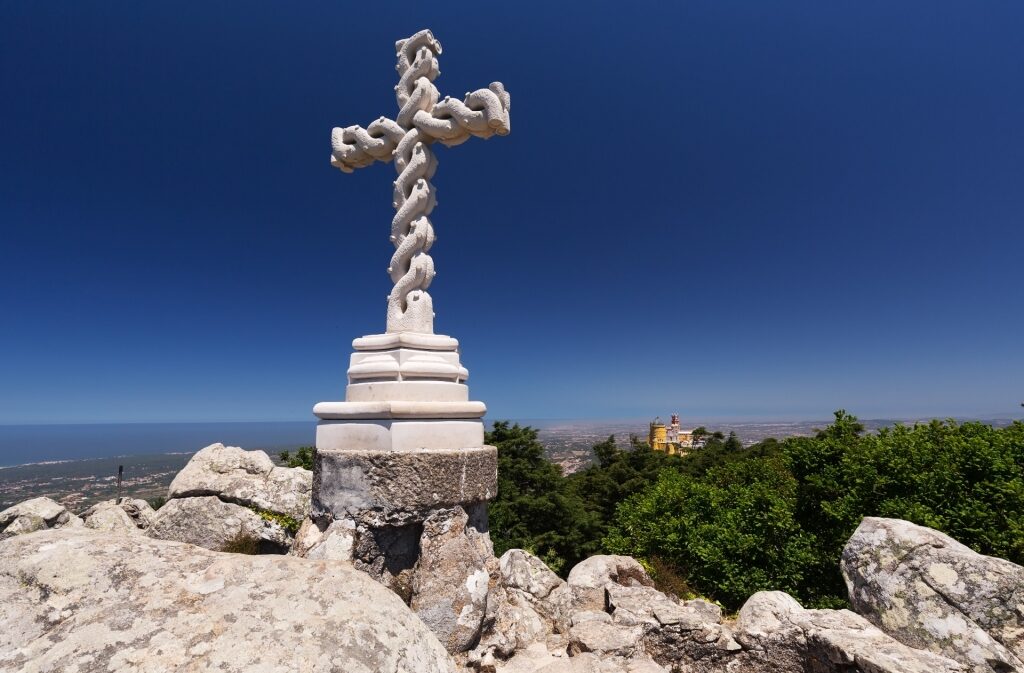
High Cross
Ferdinand II understood a grand palace needed equally pleasing grounds, and no expense was spared in furnishing the 210-acre Pena Park.
You could easily spend hours strolling below the shaded trails winding between Australasian ferns, oriental camellias and veteran oaks cheek by jowl with imported tree species. Or watching the ducks and swans flit between a handful of cascade-connected lakes.
If you’re feeling active, clamber to the High Cross at 1,732 feet, the highest point of the Sintra Hills. Crowned by the Christian symbol since the 16th century, although the current limestone cross is a recent iteration, the Atlantic panoramas across the canopy are a climb-worthy reward.
Escape to the Chalet of the Countess of Edla
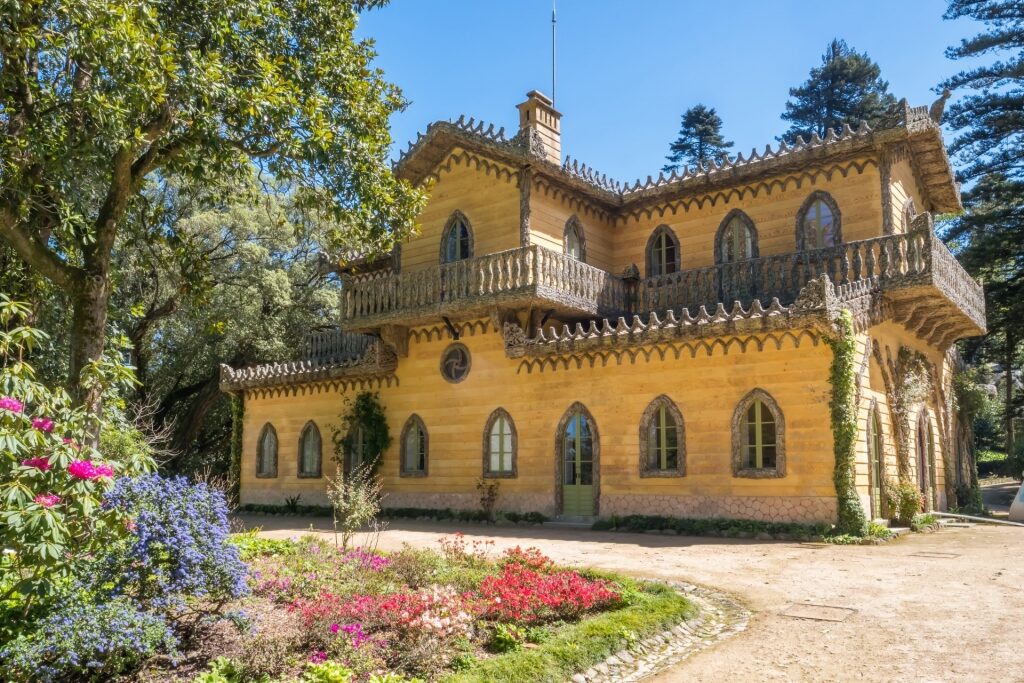
Chalet of the Countess of Edla
Concealed inside Pena Park, the Chalet of the Countess of Edla is Sintra’s least ostentatious retreat. Perhaps because it was designed by Swiss-born Elise Hensler, the second wife of Ferdinand II, rather than the king himself.
Reminiscent of an Alpine lodge, the chalet’s construction brought a taste of Hensler’s homeland to Sintra. Inside, carved oak and intricate mahogany etchings embellish the ceilings and walls, leaving a far more elegant impression than the exterior conveys.
Tragically, the original wooden-clad chalet was all but destroyed by a fire in 1999. It wasn’t until over a decade later, after a years-long renovation project, that the restoration work was completed.
Marvel at Monserrate Palace
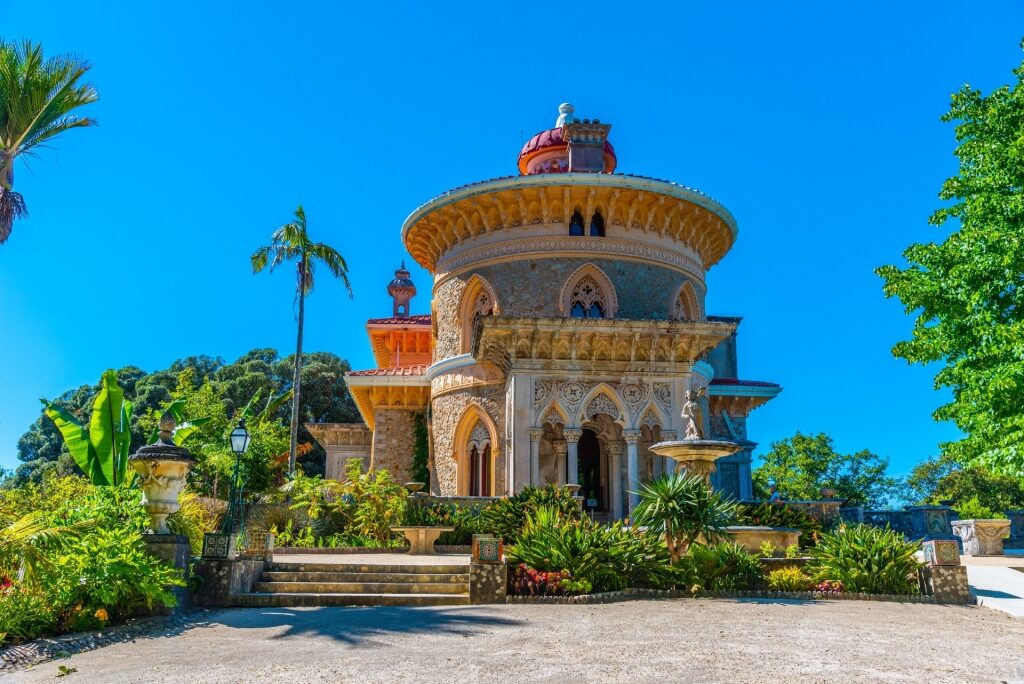
Monserrate Palace
Once little more than a hermitage, the Palace of Monserrate has changed form and hands over the centuries. Lord Byron crafted poetry here and William Beckford worked on his novels. So it’s little surprise that another Brit, Francis Cook, would eventually build a palace here.
Blending Gothic, Indian and Islamic design, walking through these astonishing halls is one of the top things to do in Sintra. From the floral patterns of the Main Hall and Music Room’s atriums to the Moorish-inspired central corridor, complete with an internal fountain, the property drips in decadent detail.
Read: Most Beautiful Places in Portugal
Descend Quinta da Regaleira’s Initiation Well
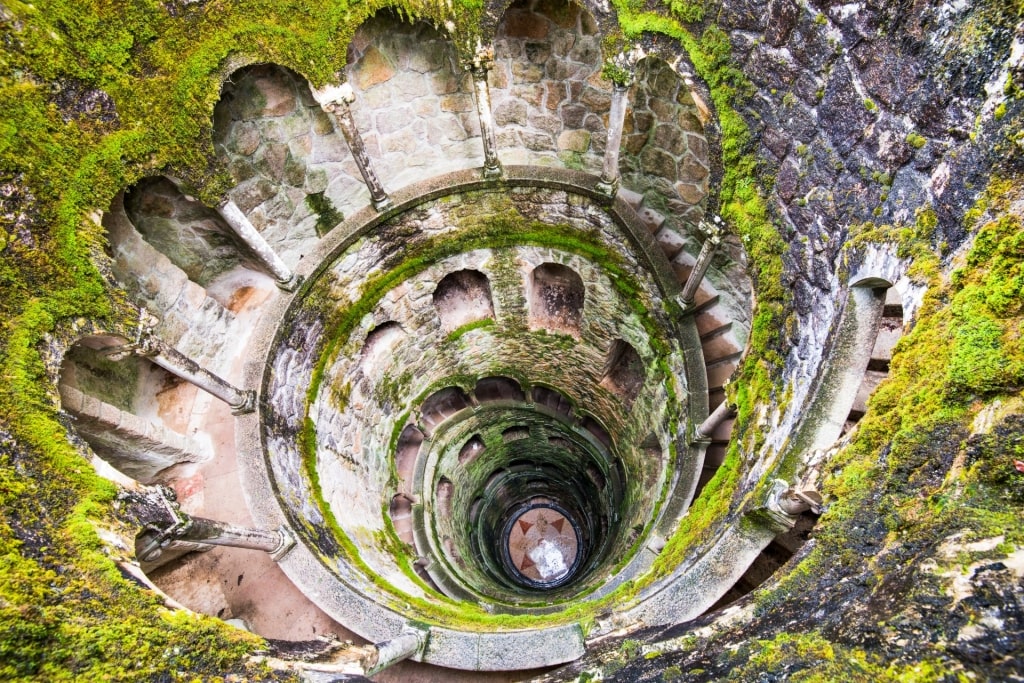
Quinta da Regaleira’s Initiation Well
The sprawling Quinta da Regaleira estate is home to one of Sintra’s more modern mansions and was the brainchild of a wealthy Brazilian-Portuguese businessman rather than the royal family.
Although only constructed at the start of the 20th century, the grand home’s array of architectural styles, including Manueline, Gothic and Renaissance, ensured it became a timeless feature of the Sintra landscape.
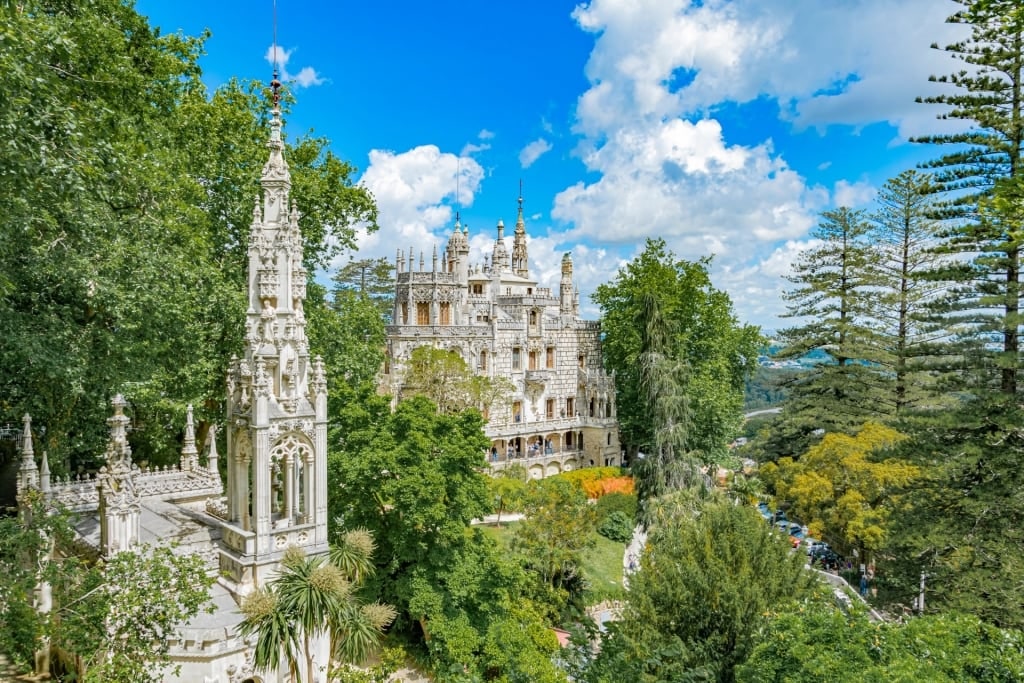
Quinta da Regaleira
Only a small part of the palace’s interior is open to the public, but it’s the characterful grounds and gardens that are most magical. In the leafy grounds, you can cross emerald ponds by stepping stones to explore hidden caves.
One of the most unforgettable things to do in Sintra is enter the initiation well, an inverted tower rimmed by moss and encircled by a spiral staircase.
Taste Traditional Pastries
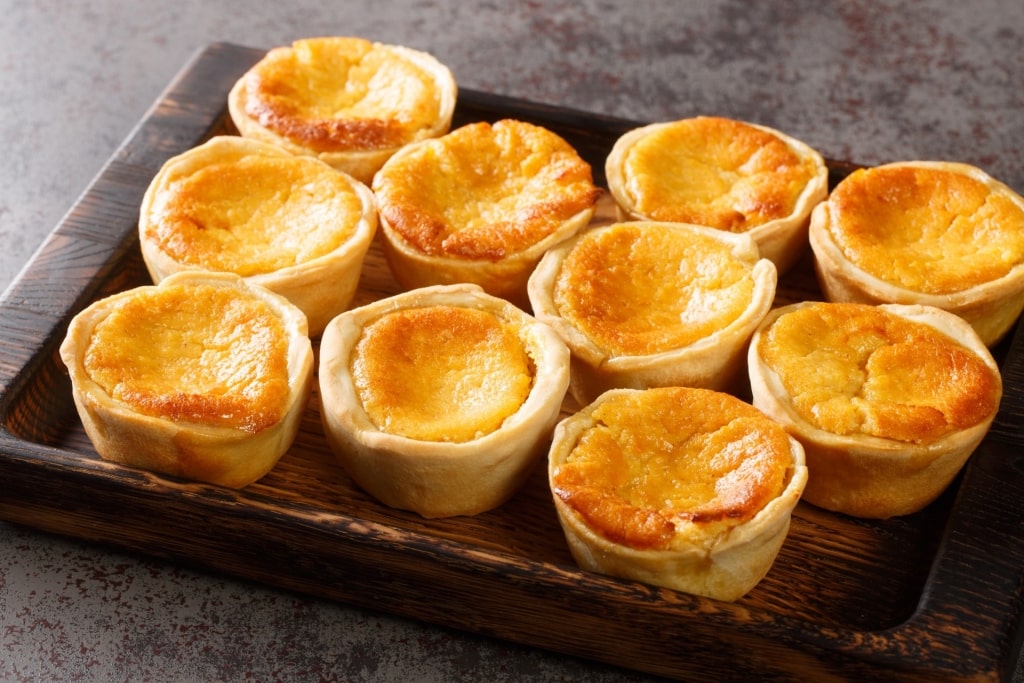
Queijadas de Sintra
You’ll find regional convent-made pastries all across Portugal, which differ from region to region. These confections baked by nuns in convents and monasteries are usually sticky and sweet, with pastel de nata in Lisbon being the most famous.
In Sintra, two tasty treats provide a much-needed sugar boost for tackling the uphill trails. Yet, unlike most of Portugal’s provincial pastries, their stories are secular rather than rooted in religious recipes.
Queijadas de Sintra is the oldest of the town’s pastries, believed to date back to the 15th century. These small, rounded cheesecakes were so treasured over the centuries they were typically baked to be used as currency.
Around the start of the 1800s, production at scale began, and factories developed, catering to their ever-growing popularity. Head to Sapa or Gregório to sample two of the best.

Travesseiros
Sintra’s travesseiros are a more typical puff pastry, combining egg and almond cream wrapped in a slightly domed shape. Piriquita has long been the go-to place in town to sample these pillow-shaped treats, perfecting their travesseiros for over 100 years.
Study Royal History in Sintra National Palace
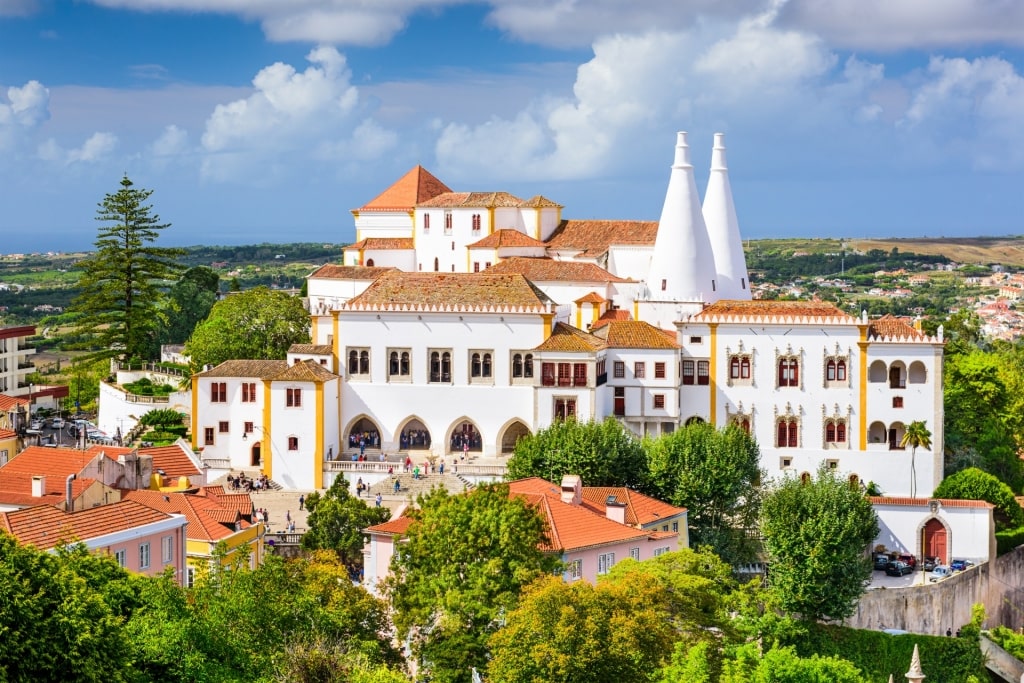
Sintra National Palace
Arriving in Sintra, your first landmark sight will likely be two distinctive conical towers rising from the National Palace of Sintra. These are the grand chimneys of the Royal Kitchen, still bedecked with traditional pots and pans.
Before making a beeline to the more colorful palace beyond, take time to visit this fascinating melange of buildings, some of which date from the 15th century.
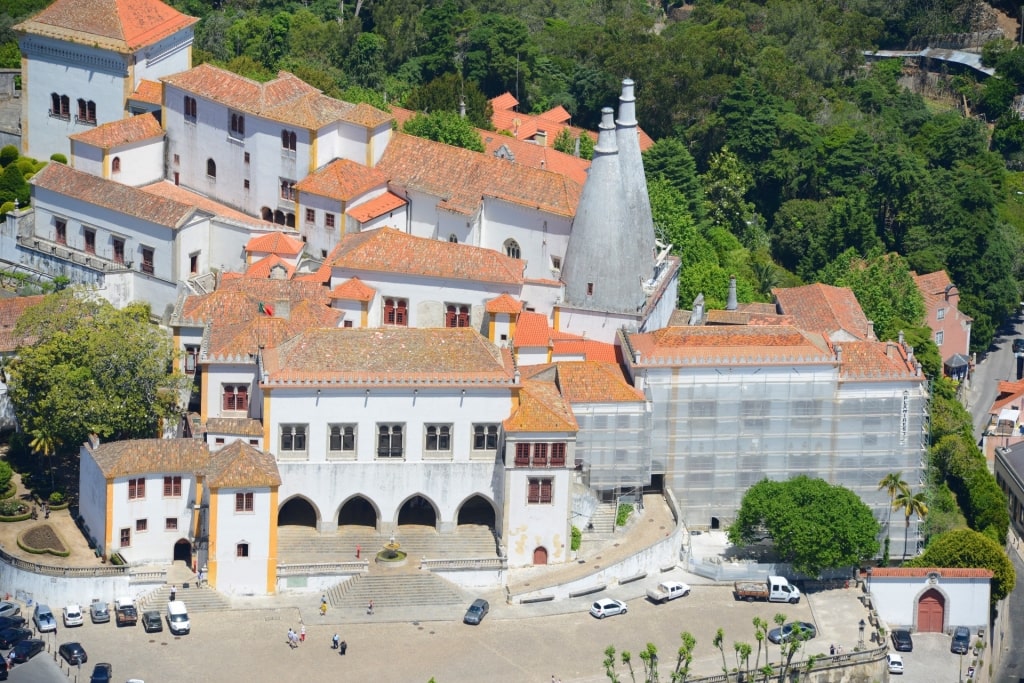
Sintra National Palace
Decked with countless era-defining stories—kings and queens, invaders and interventions, earthquakes and incarcerations—a self-guided tour of the palace is one of the best things to do in Sintra to grasp the magnitude of its history.
Behind the deceptively simple all-white exterior, stately halls dazzle. The crown jewel is the Room of the Coat of Arms, with its heavily gilded ceiling framing the crests of former noble families and walls lined with blue and white azulejos.
Further magnificent mudéjar tiles can be found throughout the palace, most notably in the chapel and adorning the floor of King Afonso VI’s former “prison cell.”
Enjoy Vistas From the Moorish Castle
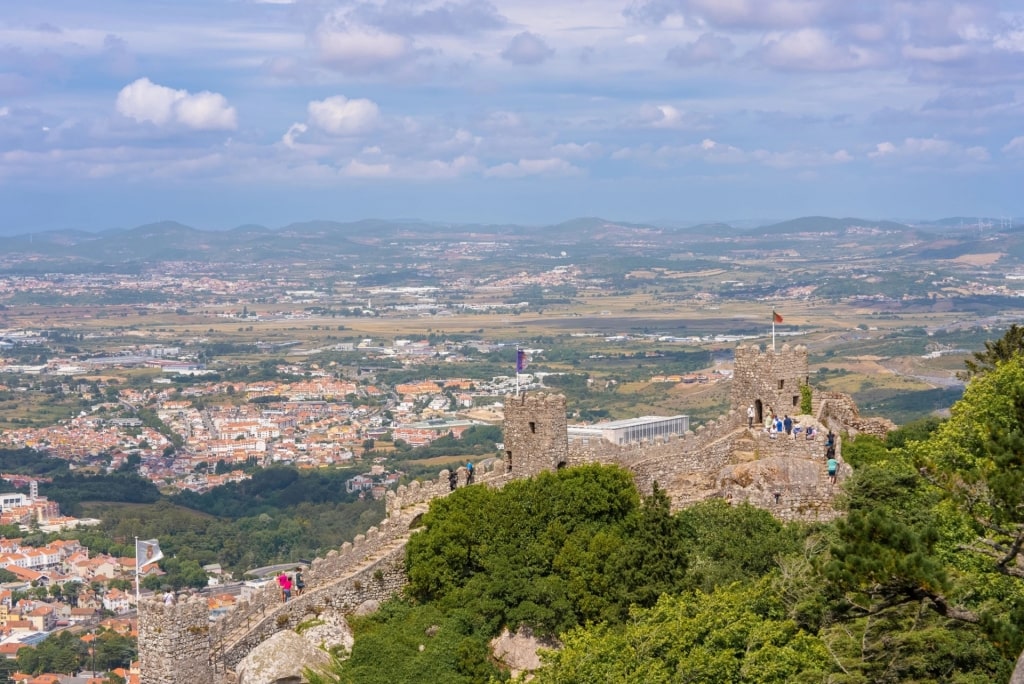
Castelo dos Mouros
Medieval Castelo dos Mouros is Sintra’s least embellished monument, but what it lacks in details, it makes up for in drama.
Constructed during the Moorish occupation of Portugal in the eighth century, the defensive castle is a rare example of military, rather than palatial, construction in the park. Back then, the vantage point atop one of the Sintra hills was perfect for protection. Nowadays, it provides one of Sintra’s most photogenic panoramas.
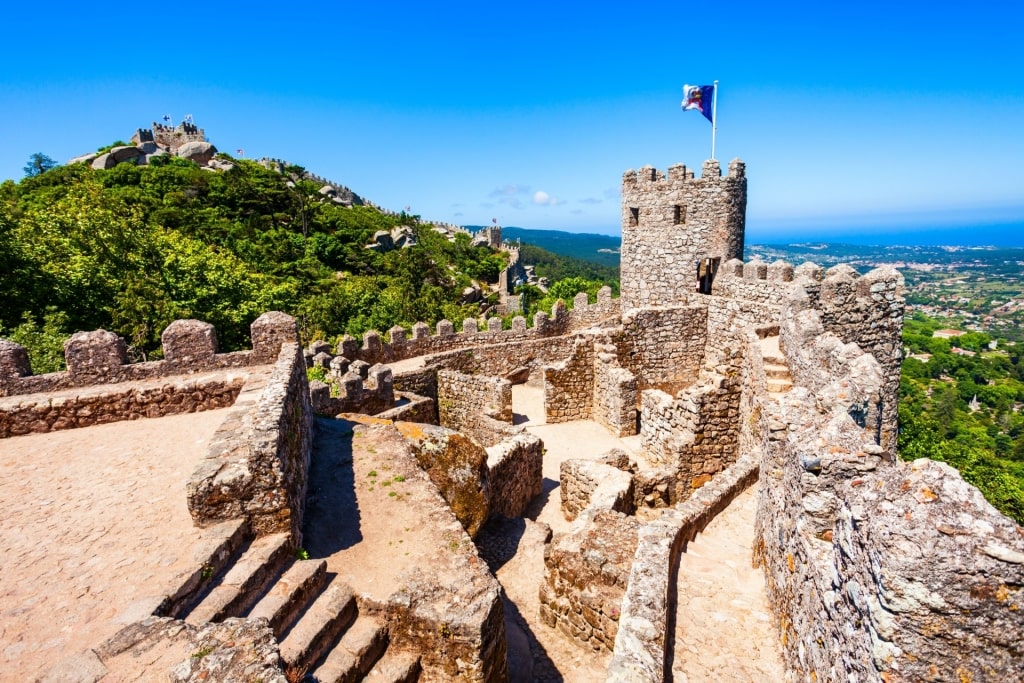
Castelo dos Mouros
Boulders and overgrowth have taken over the interior, as there’s been little interest in preserving the occupation’s heritage. Still, a few ruined historic sights survived, including the original storage silos and 13th-century water cistern.
Climb up the remaining sturdy ramparts and you’ll be rewarded with incredible vistas across the forest’s canopy and down to Sintra Palace’s landmark chimneys.
Swim & Sunbathe at Azenhas do Mar
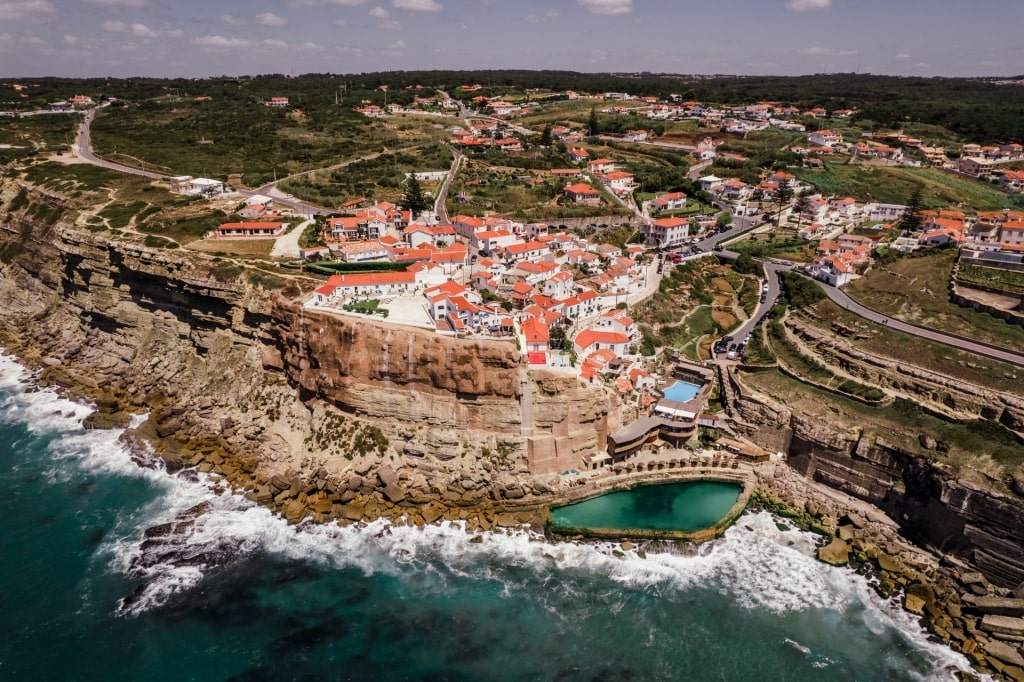
Azenhas do Mar
There is no shortage of picturesque beach towns in Portugal, but Azenhas do Mar is arguably the most enchanting. Crowning the cliffside, it’s a pretty cluster of whitewashed homes overlooking a pocket-sized beach.
The town was once nothing more than a tiny fishing village, but its picturesque and cinematic setting has captured the hearts of many, making it one of the region’s most popular beach escapes. Thankfully, the terrain has kept development limited.
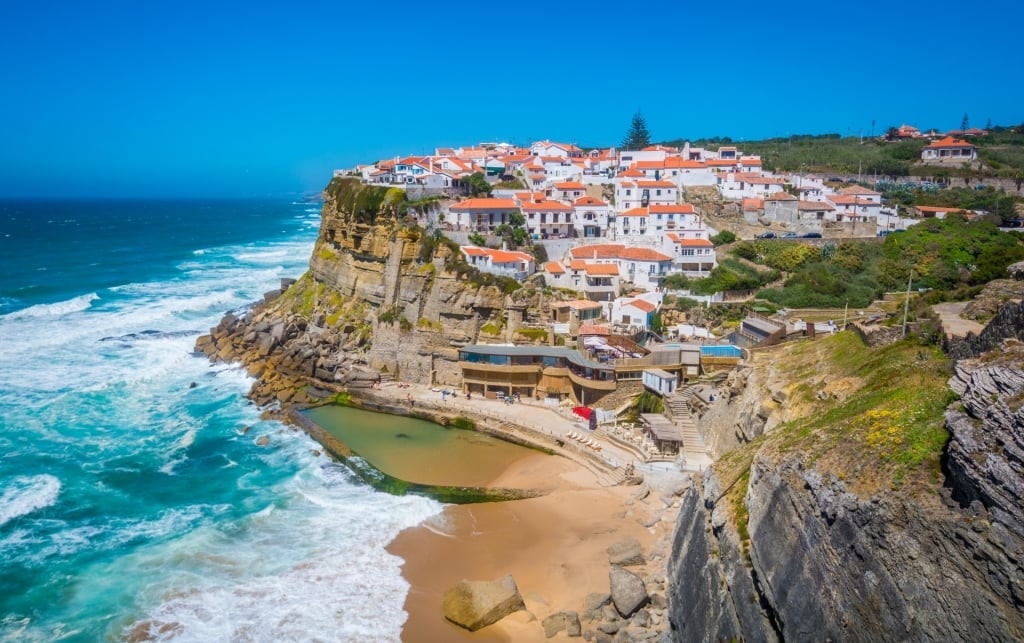
Azenhas do Mar
A scenic staircase descends from the village, but for the most impressive panorama, arrive via the viewpoint to the south. You can witness the full spectacle from here as the Atlantic’s swell sprays off the rockface.
At high tide, the beach is often fully submerged. But once water levels have receded, a calm lido appears, replenished by the retreating waves. Packing a towel for your Sintra visit is as essential as comfy shoes.
Ride the Sintra Tram
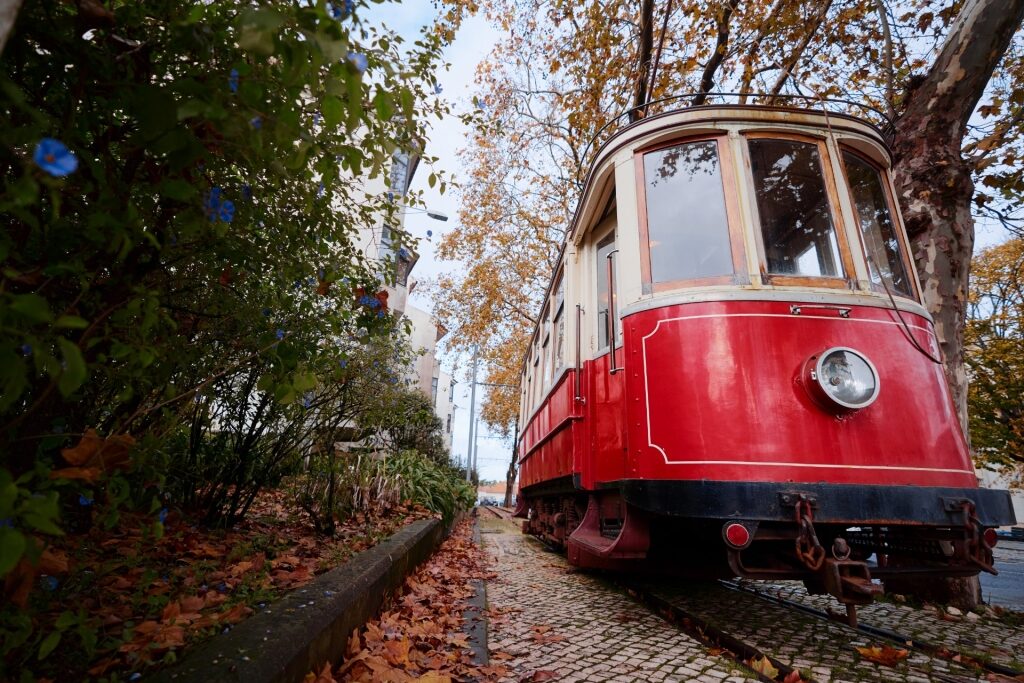
Sintra Tram
Rickety, ruby, and nostalgia-inducing, this vintage-like tram is one of the best things to try in Sintra, both for the journey and the final destination.
The single-track line was inaugurated in 1904 to connect the mountains with the coast, a welcome method of transport across this hilly terrain. The breezy route creeps from Sintra’s center to an inviting swathe of beach in around 40 minutes.
It’s a pretty journey through downhill forests, calling at Colares, where vintners produce sand-harvested wine en route, before trundling into the whitewashed beachside village. Settle in a seafood feast served with sea views at Neptuno Grill, or lounge on the sun-kissed sands.
Taste Vinho in the Colares Wine Region
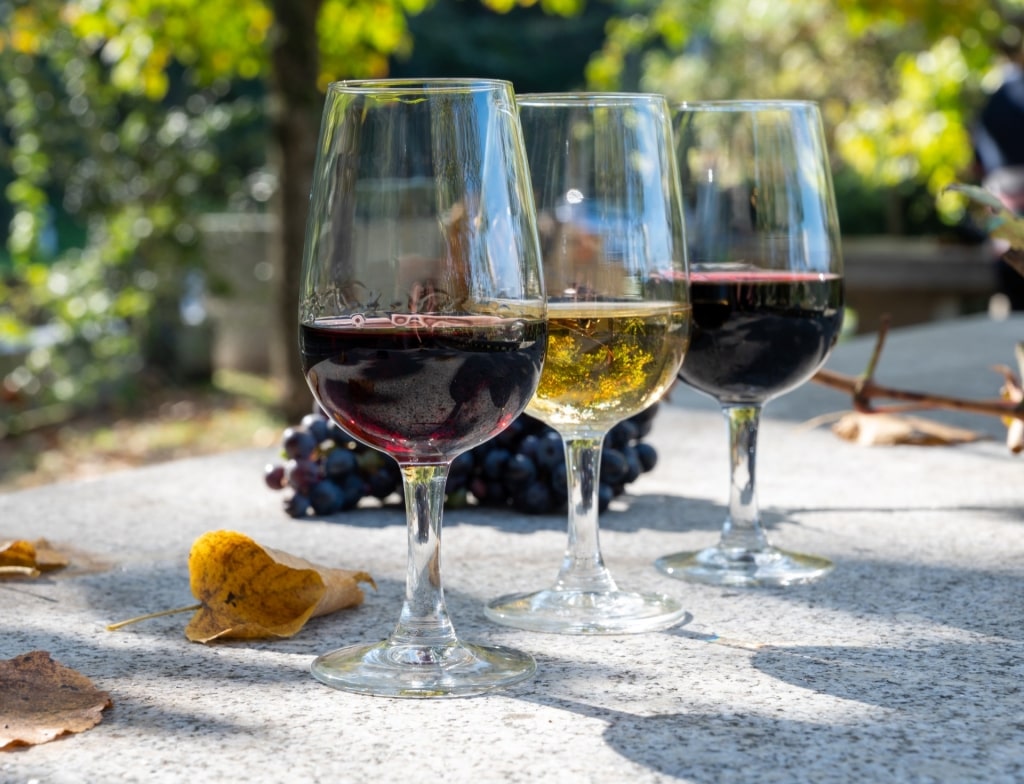
Wine
Portugal is famous for its wine, so tastings abound, but the under-the-radar Colares region is home to some of the country’s more unique vineyard landscapes.
The indigenous grape varieties are unsung on international wine lists, so take this rare chance to sample some, including dark, tannin-heavy Ramisco reds and straw-colored Malvasia.
At Adega Regional de Colares, Portugal’s oldest wine cooperative, towering wood casks in the historic hall provide a suitable sampling backdrop.
Still, a full tour that includes the vines shouldn’t be missed. Seeing the grapes snake through the soft, honeyed sands is impressive. It’s a true testament to how the Portuguese have always found a way to harvest their liquid gold in any landscape.
Read: Beginner’s Guide to Portugal’s Famous Port Wine
See the Westernmost Point of Mainland Europe
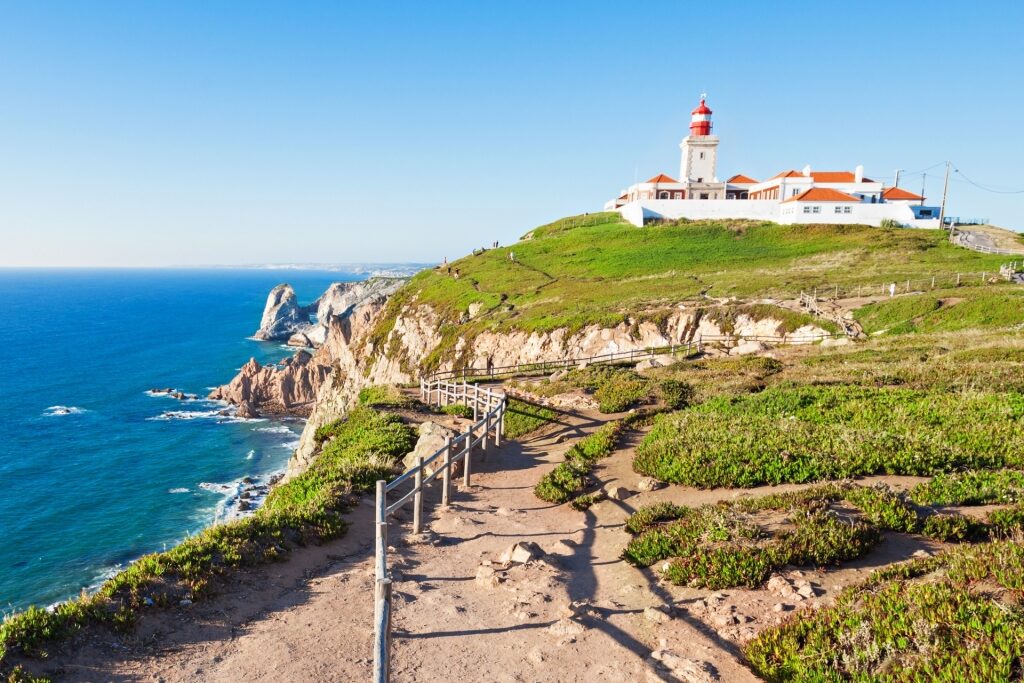
Cabo da Roca Lighthouse
Crowned by the Cabo da Roca Lighthouse, one of the oldest in the country, the wind-beaten, westernmost point of mainland Europe is one of Sintra’s most striking features.
Set on a small headland, near-vertical, weathered cliffs plunge 460 feet into the foaming waves. From the miradouro (viewpoint), the cobalt-coloured Atlantic Ocean seems never-ending.
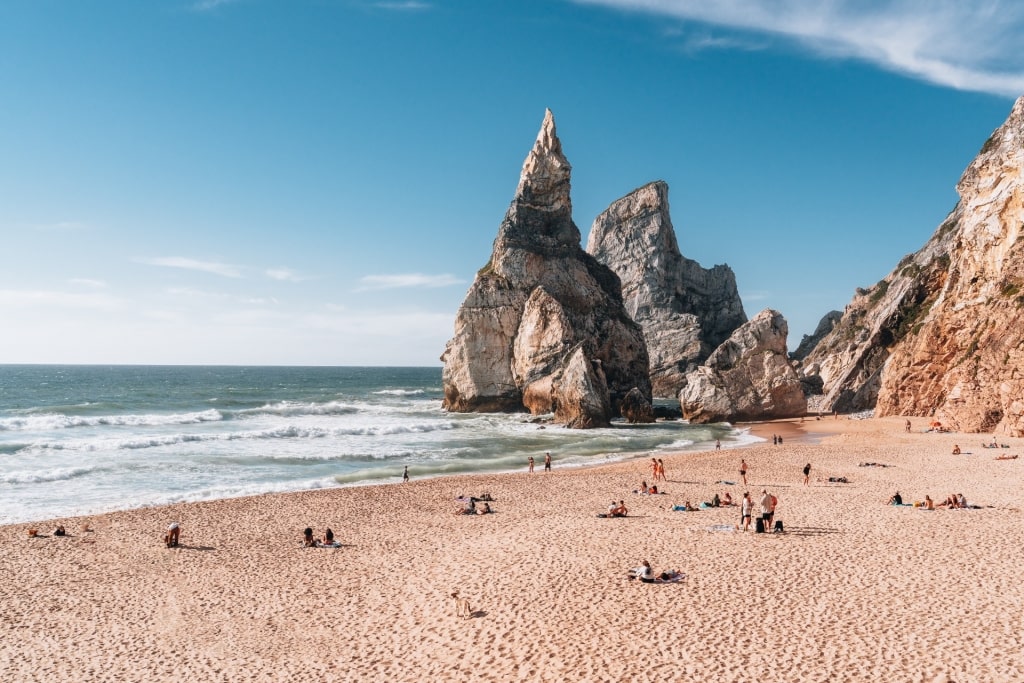
Praia da Ursa
For a unique souvenir, visit the small tourism office to purchase a personalized certificate for reaching one of Europe’s edges. Trails track the coast from here, leading to otherwise inaccessible Portuguese beaches such as Praia da Ursa, one of Portugal’s most dramatic and wild bays.
Hike in the Parque Natural de Sintra-Cascais
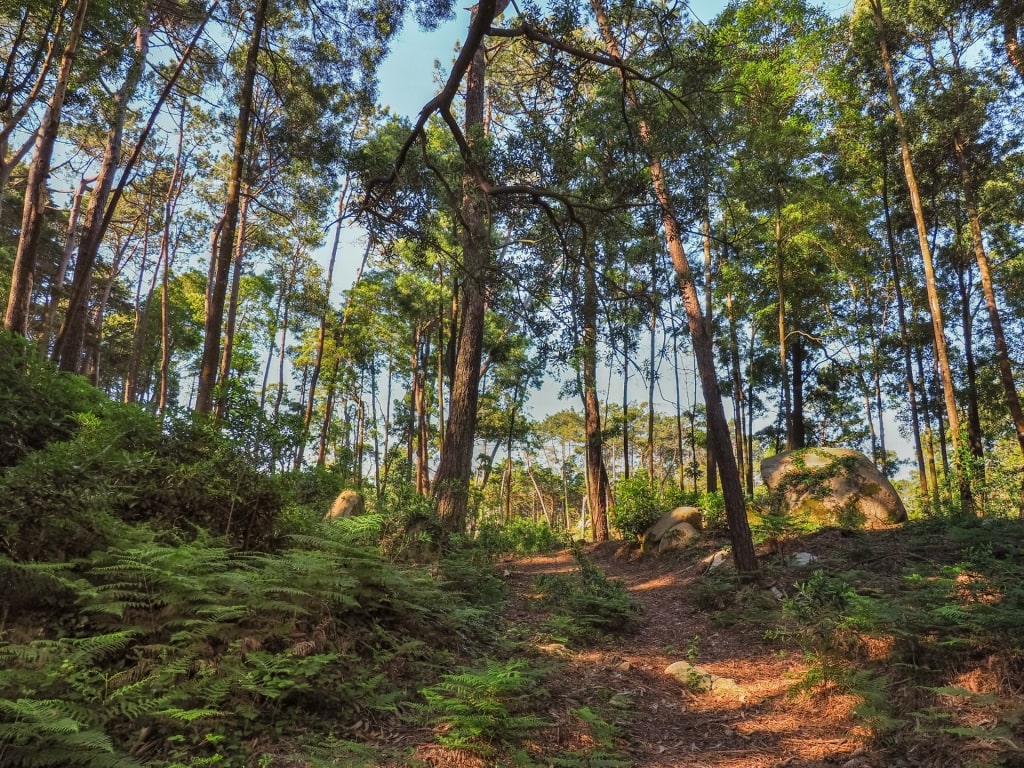
Parque Natural de Sintra-Cascais
Sintra’s abundance of architectural treasures can leave little time for anything else. Yet many of these decadent dwellings gain much of their character from the surrounding granite mountains and the dense groves of oaks and pines that define the Parque Natural de Sintra-Cascais.
Some of the best things to do in Sintra can be found along the trails and tracks that slice through the landscapes. Home to some of the best hiking in Europe, there’s a trail for all interests and abilities.
Geologists will find wonders along the Cabo da Roca trail, tracking 110 million-year-old dinosaur footprints and granite outcrops.

Mourão River Waterfall
The Mourão River Waterfall track leads to a tiny basin where a tumbling cascade delivers a refreshing end-of-trail dip. Or take the circular Capuchos trail to traverse a 16th-century convent and otherwise easily missed pre-historic sights.
Surf Beyond Sand Dunes
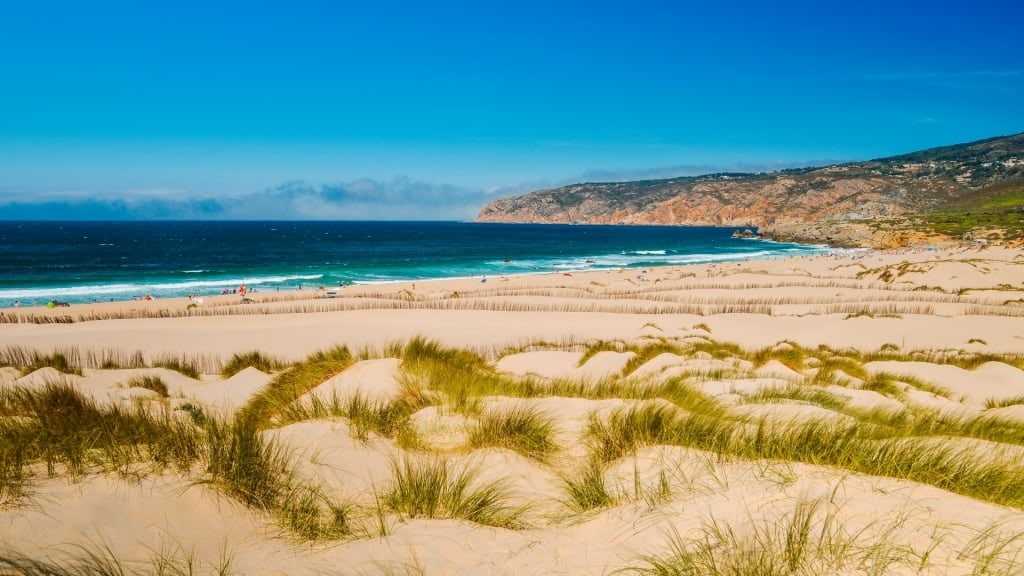
Praia do Guincho
If you’re more at home among pounding waves than palatial homes, head south to Praia do Guincho. One of the best beaches near Lisbon for surfing and kitesurfing, this dune-backed, swell-heavy swathe is at the mercy of the wild Atlantic.
Even if you’re not planning to ride the waves, enjoy an amble along the boardwalk, which weaves through the ribbon of dunes. Juniper and beachgrass punctuate the delicate mounds while lizards scurry across the sands.
Detour to Queluz National Palace
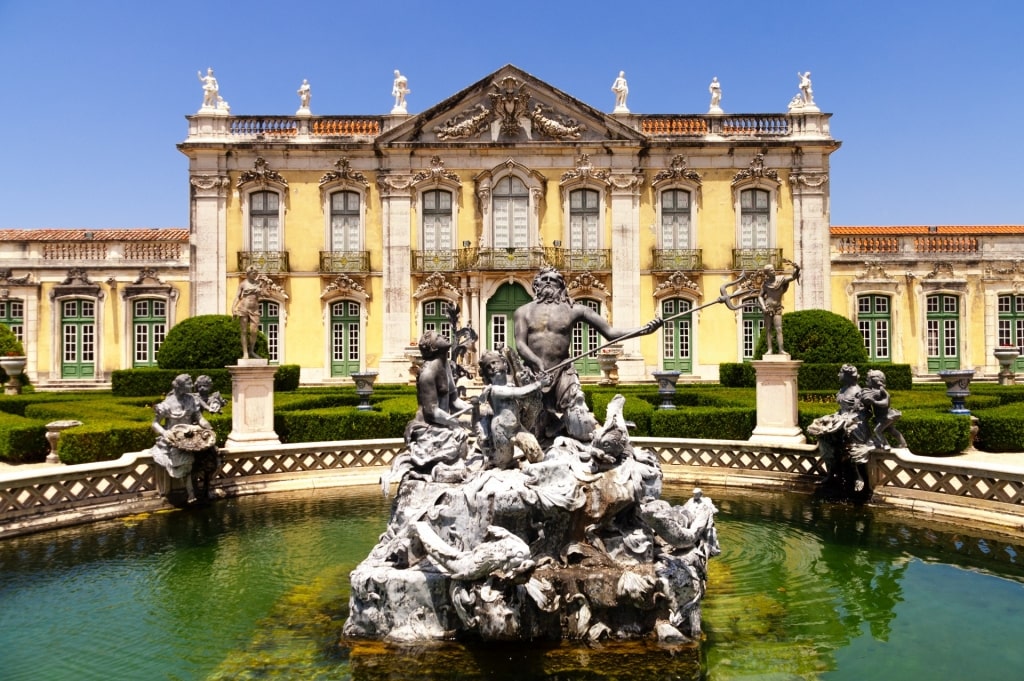
Queluz National Palace
The National Palace of Queluz is one of Sintra’s most overlooked stately buildings, partly due to its more offbeat location. But this distance is perhaps its best feature, as “Portugal’s miniature Versailles” rarely sees the same crowds as those in the big hitters.
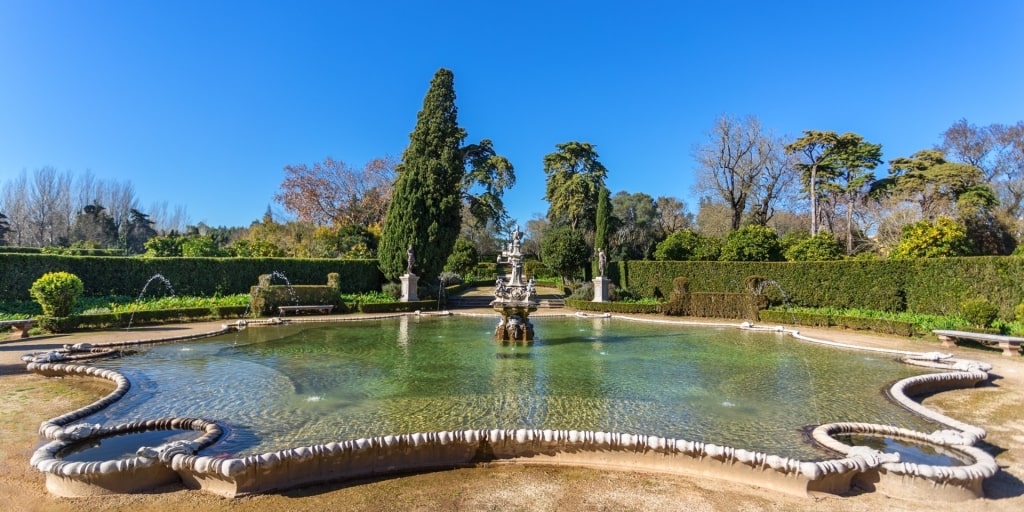
Queluz National Palace
The palace was built in the 18th century and its inspiration leans heavily on Paris. French designers conceived the well-manicured gardens and many halls inside the rococo-style palace. Portuguese personality is also featured, with azulejos lining hallways and the garden’s canal.
This exuberant blend quickly made it a favorite summer retreat of the monarchy. Later, it became the royal residence of Queen Maria I. Even to this day, the gilded Grand Hall hosts visiting dignitaries under colossal chandeliers at the invitation of the President.
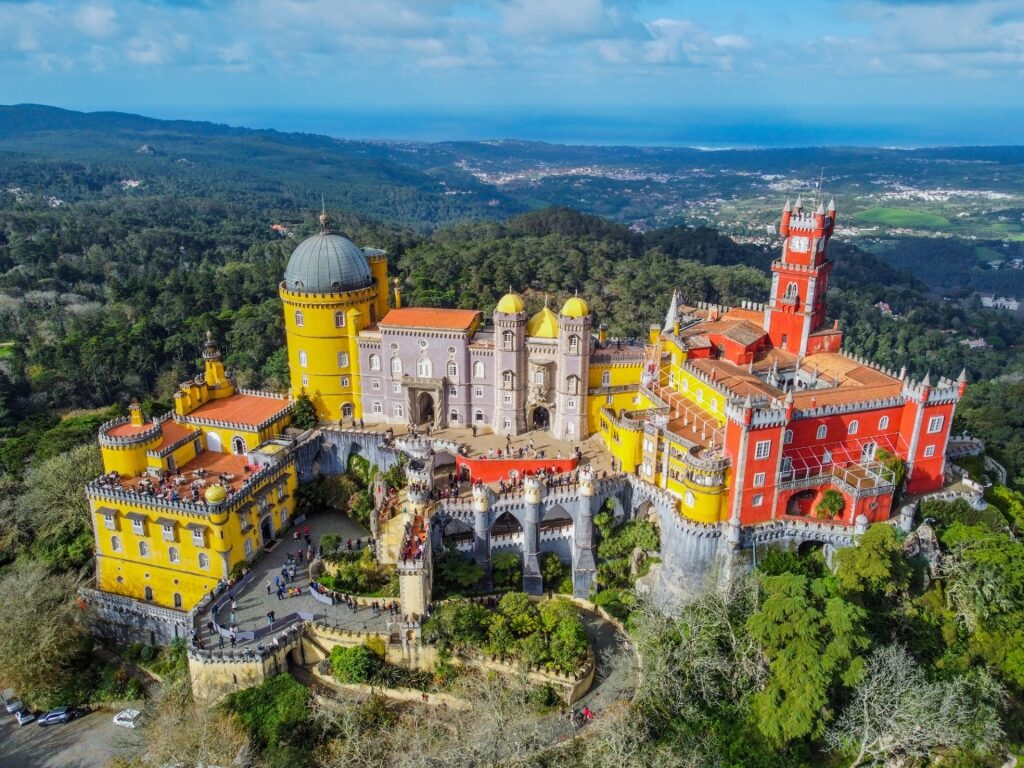
Sintra
Ready to uncover Sintra’s grand attractions and secret treasures? Browse our cruises to Lisbon and start planning your Portuguese adventure with Celebrity.
